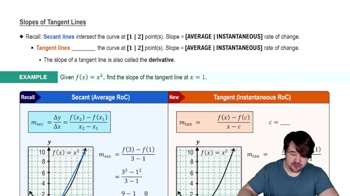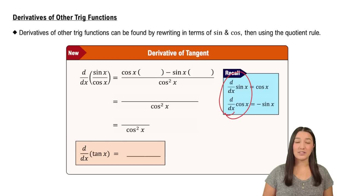Interpreting Derivative Values
Effectiveness of a drug On a scale from 0 to 1, the effectiveness E of a pain-killing drug t hours after entering the bloodstream is displayed in the accompanying figure.
" style="" width="240">
a. At what times does the effectiveness appear to be increasing? What is true about the derivative at those times?






